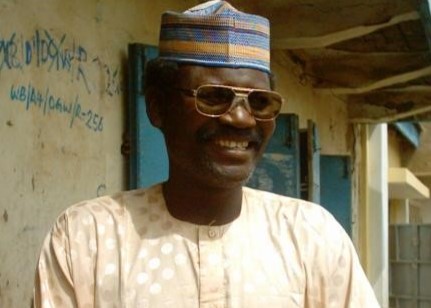In whatever aspects of human living, there is always a fountainhead. I freely borrow the expression from the title of Ayn Rand’s 1943 philosophical novel – which has remained my most favourite novel ever since 1974 when I bought it at the Kano Cooperative Supermarket. Philosophically as the plot of the novel reveals, it is the struggle for acceptance of great new ideas in human society. In its ordinary linguistic use, it means an original source of something.
Depending on who you listen to, there are competing claims about how the Hausa video film industry started – or who kickstarted it. In the scramble for claims and counterclaims, it is often ignored that a film – based on celluloid reels and tapes, is different from a video film – based on compact tapes which included VHS and Betamax tapes. If you can’t remember these two tape formats, just ask Mom or Dad – they will even fish out their own favourite Indian tapes for you to see from what passes on for attic in the house! My narratives in this series are based on the evolution of Hausa home videos shot with should-mounted cameras such as Panasonic M-Series camcorders (M-7, M-10, M-300, M-3500, & M-9500 SVHS).
Further, if Hafsat AbdulWaheed is credited as the first person to kickstart the Littattafan Soyayya genre with her So, Aljannar Duniya in 1979 (despite other novels existing prior to that), then one person has to be credited with kickstarting the thought processes that led to Kannywood. That person was Sani Lamma of Kano.
In 1980 Sani Lamma, an amateur photographer, and one of the earliest video parlor proprietors and cassette sellers in Kano, had the opportunity to perform the Hajj. It was while in Saudi Arabia that he first saw a video camera, which he bought. He hurriedly gathered some friends and asked them to recite religious poetry, and he recorded it—making it the first Hausa film, albeit on video.
When Sani Lamma returned to Kano, he entered into the video-coverage business which became an instant hit and money earner due to the appeal of people seeing themselves in videos. Soon he was covering naming ceremonies, wedding parties, party conventions and graduation ceremonies. This gave established stage drama groups – and there were many of them – ideas about screening their shows.
Perhaps the first of the numerous drama groups in Kano to make the leap from stage to screen was Yakasai Welfare Association which in 1980 persuaded one of its members, Bashir Mudi Yakasai, then working as a Press Photographer in the Ministry of Education to borrow a Umatic camera for them. They staged a play, Ɗan Duniya in which Bashir Mudi Yakasai handled the camera. The tape was shown on a television attached to the camera (there was no video recorder available to the group in any form) and given public showing at Rimi City Primary School in June 1980.
In 1981 the Kano State Government civilian administration of Governor Muhammad Abubakar Rimi set up its own television station, CTV 67 to counter what it perceived as the blanking-out of its achievements (and news coverage) by the Federal Government which owned the Nigerian Television Authority, NTA. The Federal Government was at the time under the majority of rule of National Party of Nigeria (NPN) which had no base in Kano, which was controlled by Peoples’ Redemption Party, PRP.
One of the strategies employed to set up the new CTV 67 television station was to poach staff from NTA, and lure them away with promises of overseas training, especially in the United States, and generally higher pay and greater creative freedom. Many left and migrated to CTV 67, including Bashir Mudi Yakasai, who was eventually sent to US for further training in 1981. CTV 67 started out with relatively superior technical equipment, including more than 20 Umatic cameras, all under Bashir Mudi Yakasai’s control. This gave him the opportunity to lend out the equipment and help the many amateur drama clubs and associations then getting interested in seeing their productions on television.
When Muhammad Abubakar Rimi left the office of the Governor of Kano State, he was succeeded by Alhaji Abdu Dawakin Tofa in August 1983, and Bashir Mudi Yakasai was transferred from CTV 67 to the Government House, Kano, as the Governor’s official videographer. It was he who suggested to the governor the purchase of a VHS camera which was used to replace the Umatic camera he had been using. This camera was made available to amateur drama clubs to record their productions up to December 1983.
Indeed, the availability of the camera through Bashir made it possible for a group of karate and Chinese film enthusiasts to stage a production, Kasko in December 1983. The stars were Ibrahim Muazzam “Boss”, Shehu Inuwa, Sani “Chan Se”. This video was aired on CTV 67 and became the first independent production to be given air time in a public television in Kano. It was shown as “the year in review”. The video was actually shown as part of “fitness exercise” series of documentaries. The video did include a long sequence of work-outs, but embedded within a chop-suey karate story. The video thus had an official backing of the television studio heads because the amateur group actually wrote a letter requesting the studio to air the program as part of its “sports review” of the year.
When it was aired, the television studios were paid a visit by the National Security Organization, NSO, the dreaded state-security apparatus (eventually transforming into Department of State Services, DSS), in January 1984, whose officials wanted to know why Kasko was aired, who was behind it, and its purpose. It was seen as promoting gangland culture and therefore a threat to public security. The transition to democracy in 1983 was not without its problems of sponsored attacks on political opponents, and Kasko, cast in the style of gangland factions, was seen as providing further templates for antisocial behavior by youth. This was beginning of the clash between cinematic creativity and public culture in Kano.
In the meantime, within three years, from 1980 to 1983, Sani Lamma had established a reputation of being a cinematographer of sorts, screening his efforts in his video parlor. However, the catalyst that led to the emergence of the present predominant Hindi cinema themes of the Hausa home video was the establishment of Gyaranya Drama Club (GDC) in about 1981.
Professsor Adamu writes from Kano









